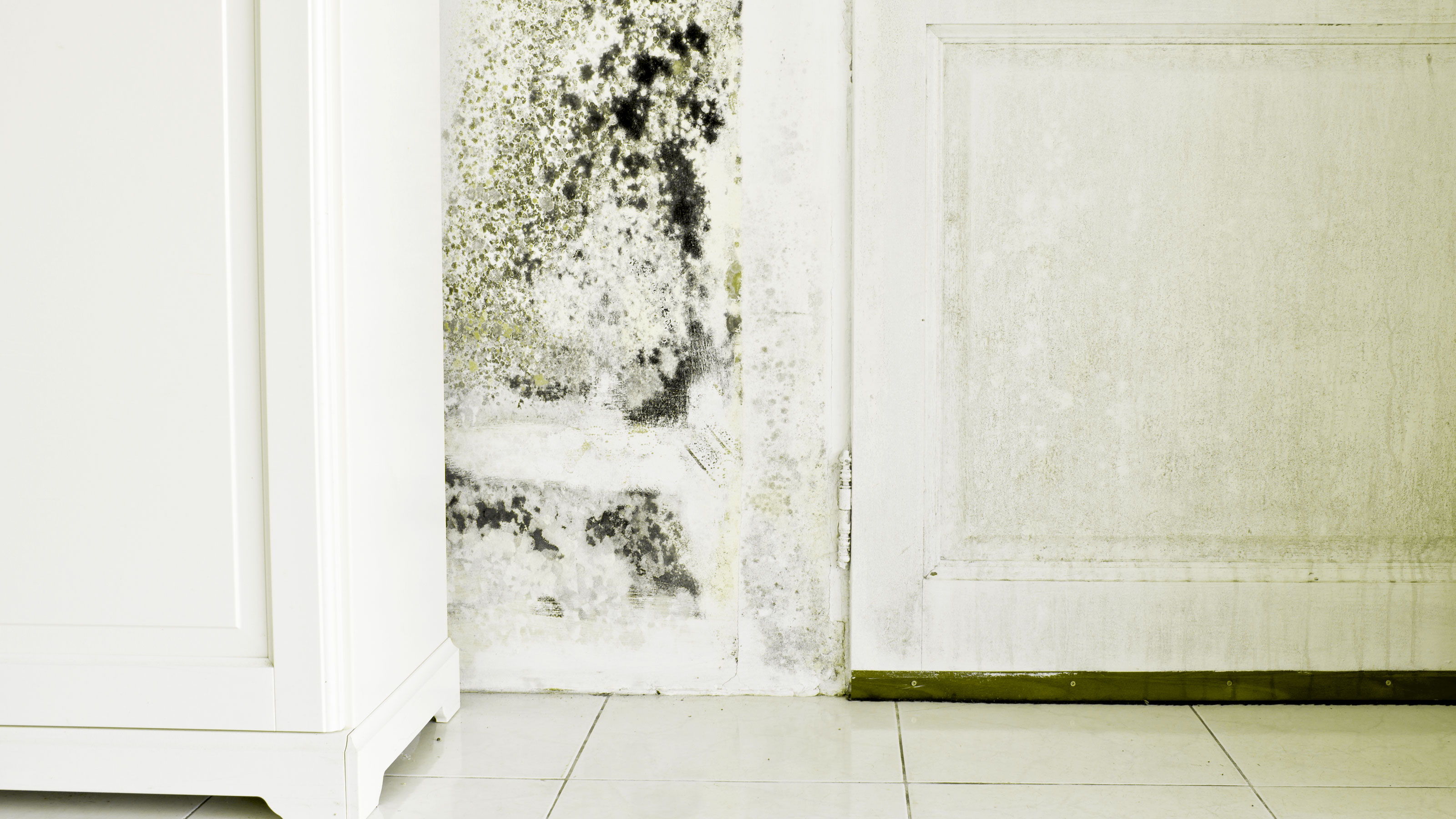What is yellow mould on walls and how do I get rid of it?
Yellow mould on walls is ugly, unhealthy and unwanted. Find out what causes it, what you can do to kill it and what to do if it comes back

No-one wants yellow mould on walls around the home. It doesn’t look great and if not treated can cause unwanted health issues. It also tells you that you might have a problem such as rising damp in your walls. Your damp course could have broken down and needs replacing.
The cause might not be as drastic as a new damp course, but whatever the reason you need to be removing mould from walls, doors, ceiling, skirting boards and anywhere else as quickly as possible. The sooner it's gone the better it will be for your home and health.
What is yellow mould on walls?
Mould comes in a variety of colours depending on what type of mould it is and yellow mould is commonly a fuzzy-looking mould known as penicillium. But other types of mould can be around the home. Yellow moulds are a type of fungus that can also be blue or green in colour. It’s not good for your health if left untreated, so it needs to be dealt with as soon as spotted.
Signs of yellow mould?
There will be obvious signs of yellow mould on surfaces as it grows, typically you'll find mould on skirting boards, walls, ceilings, floors, but it can get into carpet and appear on doors, door frames and even furniture. But, like most moulds it doesn’t always appear in easy to spot locations.
If you have a musty smell wafting around the home this might be a sign of yellow mould making an appearance. Yellow mould loves warm and humid areas and will quickly grow in places where there’s high moisture levels. This will typically be behind furniture at floor level where there’s a lack of air flow and rising damp due to a failure in the damp proofing. Yellow mould in other areas can be caused by penetrating damp where there’s defective pointing, cracked render or a faulty roof.
Is yellow mould harmful?
This will depend on what type of yellow mould you are dealing with, and while yellow mould is not toxic it contains toxins that can exacerbate health problems – commonly respiratory problems – and is best avoided.
If you do see yellow mould developing it is best not to touch it and look to get rid of it as soon as possible. Especially, if it is growing in an area where you spend a lot of time – i.e bedroom, lounge or living room.
Is yellow mould worse than black mould?
The colour of the mould in your home gives an indication of what type of mould it might be, but to be sure you will need to get it tested. Is it worse than black mould? Unlikely. Black mould that is commonly found in the home is known as Stachybotrys chartarum and can cause the same issues as yellow mould. However, black mould has an element that produces neurotoxic compounds which can affect the brain, with children and those with poor immune systems particularly vulnerable.
All moulds typically contain some form of toxin and the obvious thing to do is get the problem sorted as soon as possible.
How to get rid of yellow mould on walls
Before you start dealing with mould on your walls you want to get yourself some protective gear to help you stop breathing in the spores. A face mask like this FFP2 Face Mask from Amazon and a pair of rubber gloves should suffice. But you may want goggles as well to stop any cleaner getting in your eyes.
Start with a mixture of warm water and a few squirts of washing up liquid and use a clean cloth or kitchen sponge to wipe off the surface mould. Now get a few sheets of kitchen roll and wipe the surface clean and dry. Repeat the process, but make sure to use a clean cloth/sponge, clean water and new kitchen roll.
Bring your dream home to life with expert advice, how to guides and design inspiration. Sign up for our newsletter and get two free tickets to a Homebuilding & Renovating Show near you.
Finally, use a one part white vinegar/two parts water solution for a quick DIY mould killer. Use a spray bottle to apply, leave for a minute or two and wipe off with clean kitchen roll.
Note that cleaning the affected area will only be a temporary solution if the underlying problem is not dealt with. You can also use mould sprays such as HG mould spray or Dettol antibacterial mould spray which you can buy easily from Amazon.
Tackling yellow mould that comes back
If you have removed mould from walls and you spot yellow mould making a reappearance in areas that you have cleaned and treated you probably have an underlying problem that needs dealing with. You may have rising or penetrating damp in the walls that are causing the problem. If the cause of the issue isn’t dealt with the mould will keep reappearing.
If you are unsure of the issue behind the mould you can call in a mould removal and treatment specialist who can help identify the problem.
If the reappearing mould is in your carpet, or wood such as doors, door frames, skirting boards the best option is to replace them to stop it coming back. Mould on windows is another common problem that is typically different to yellow mould but still needs to be dealt with.
Can you paint over yellow mould?
Yes you can paint over once you have cleaned and dried the affected area. Painting over mould without treating the affected area will simply see the mould reappear at some point in the future.
Once the area has been cleaned and is dry you need to remove any flaking paint. Use a scraper and a fine grade sandpaper to prepare the surface. Once the surface is ready apply a mould resistant paint like this Zinsser Perma White Self-Priming Interior Paint from Amazon, before applying the final coats.
Steve Jenkins is a freelance content creator with over two decades of experience working in digital and print and was previously the DIY content editor for Homebuilding & Renovating.
He is a keen DIYer with over 20 years of experience in transforming and renovating the many homes he has lived in. He specialises in painting and decorating, but has a wide range of skills gleaned from working in the building trade for around 10 years and spending time at night school learning how to plaster and plumb.
He has fitted kitchens, tiled bathrooms and kitchens, laid many floors, built partition walls, plastered walls, plumbed in bathrooms, worked on loft conversions and much more. And when he's not sure how to tackle a DIY project he has a wide network of friends – including plumbers, gas engineers, tilers, carpenters, painters and decorators, electricians and builders – in the trade to call upon.

